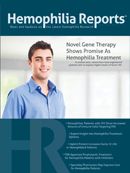The AASLD/IDSA Recommendations for Treatment of Hepatitis C Virus
Understanding the current guidelines for hepatitis C (HCV) treatment and the role of direct-acting antiviral (DAA) agents is a priority for healthcare professionals.

Of the 3 to 4 million Americans with chronic hepatitis C virus (HCV) infection, only about half are aware that they have the infection, and just 13% to 18% have received treatment. Understanding the current guidelines for HCV treatment and the role of direct-acting antiviral (DAA) agents is a priority for healthcare professionals.1
About three-fourths of people with chronic HCV infection are members of the generation born between 1945 and 1965—baby boomers. Because approximately 3% of people in this age group are thought to have HCV infection, several health organizations—including the Centers for Disease Control and Prevention, the American Association for the Study of Liver Diseases (AASLD), the Infectious Diseases Society of America (IDSA), and the US Preventive Services Task Force—recommend universal one-time testing for all patients born between 1945 and 1965.1-3
Other populations for whom testing is recommended include1:
- Anyone who has ever been incarcerated (an estimated 29% of people who have ever been incarcerated have anti-HCV antibodies)
- Patients who have ever used an illicit drug (including intranasal and intravenous drugs)
- Anyone who received a blood transfusion before July 1992 or clotting factor concentrates manufactured before 1987
- Anyone who has received a tattoo in an unregulated setting
- Anyone who has undergone long-term hemodialysis (even if the person has had a kidney transplant and is no longer on hemodialysis)
- Anyone with HIV infection
Figure 1. Recommended treatments for genotypes.1,7
Genotype
Treatments
Genotype 1
Recommended (IFN-eligible): SOF
+ PEG/RBV for 12 weeks
Alternative (IFN-eligible): SMV for
12 weeks + PEG/RBV for 24
weeks
Genotype 2
Recommended: SOF + RBV for
12 weeks
Genotype 3
Recommended: SOF + RBV for
24 weeks
Alternative: SOF + PEG/RBV for
12 weeks
Genotype 4
Recommended (IFN-eligible):
PEG/RBV for 12 weeks
Recommended (IFN-ineligible):
SOF + RBV for 24 weeks
Genotype 5/6
Recommended: SOF + RBV for
24 weeks
Alternative: SOF + PEG/RBV for
12 weeks
IFN indicates interferon; PEG, peginterferon; RBV, ribavirin; SMV, simeprevir (Olysio); SOF,
sofosbuvir (Sovaldi).
Note: The recommendations here apply to treatment-naïve individuals.
The protease inhibitors telaprevir and boceprevir are not recommended under current
guidelines.
Testing Specifics
If a patient has a positive test result for anti-HCV antibodies, the next step is confirmatory testing for the presence or absence of copies of HCV RNA through polymerase chain reaction (PCR). A positive test result for HCV RNA through PCR involves characterizing the viral genotype (1 through 6) and the virus concentration.1
Treatment Efficacy
With HCV, the efficacy of treatments is measured in terms of rates of sustained viral response. HCV RNA levels are assessed 12 to 24 weeks after the end of treatment. Patients who have undetectable levels of HCV RNA 12 to 24 weeks after the end of treatment are functionally cured, meaning that (barring reinfection) they have a 98% to 99% chance of remaining free of HCV infection indefinitely.4
Overview
By the late 2000s, the standard treatment of HCV infection was peginterferon with ribavirin. In 2011, the FDA approved the protease inhibitors boceprevir (Victrelis) and telaprevir (Incivek) for add-on treatment to peginterferon and ribavirin to boost rates of sustained viral response. As of 2014, most first-line treatment regimens still contain peginterferon and ribavirin, but telaprevir and boceprevir are no longer the recommended DAAs, and have been replaced by newer ones. Currently approved DAAs are usually used with both peginterferon and ribavirin to treat eligible patients.1,5,6
Sofosbuvir (Sovaldi), a DAA produced by Gilead, is an orally administered NS5B polymerase inhibitor. Patients who have not received prior treatment and have genotype 1, 2, 3, 4, 5, or 6 HCV infection are now generally treated with a sofosbuvir-based regimen as a first-line option (Figure 1).1,7 Simeprevir (Olysio), a DAA produced by Bristol- Myers Squibb, is an orally administered NS3/4A protease inhibitor. A simeprevir-based regimen is an alternative option to a sofosbuvir-based regimen in patients with genotype-1 HCV infection. Although an indication has not yet been secured from the FDA for combination treatment with sofosbuvir, guidelines already recommend use of simeprevir and sofosbuvir in combination as a first-line regimen for patients with genotype 1 chronic HCV who have failed to achieve a cure with a prior round of therapy with interferon/ribavirin combination treatment (Figure 1).1,8
Conclusion
Although many agents are in development and wider use of both interferon-free and ribavirin-free regimens are expected in the near future, it is important to maintain a general understanding of the most up-to-date treatment choices. Treatment guidelines in HCV are continually updated and posted at HCVGuidelines.org.1
References:
1. American Association for the Study of Liver Diseases (AASLD) and the Infectious Diseases Society of America (IDSA). Recommendations for testing, managing, and treating hepatitis C. www.hcvguidelines.org/. Accessed June 29, 2014.
2. United States Preventive Services Task Force. Screening for hepatitis C virus infection in adults. www.uspreventiveservicestaskforce. org/uspstf/uspshepc.htm. Accessed June 29, 2014.
3. Centers for Disease Control and Prevention. Hepatitis C: why baby boomers should get tested. www.cdc.gov/knowmorehepatitis/ Media/PDFs/FactSheet-boomers.pdf. Accessed June 29, 2014.
4. Chen J, Florian J, Carter W, et al. Earlier sustained virologic response end points for regulatory approval and dose selection of hepatitis C therapies. Gastroenterology. 2013;144(7):1450-1455.
5. VICTRELIS (boceprevir) capsules [package insert]. Whitehouse Station, NJ: Merck & Co, Inc; 2013.
6. INCIVEK (telaprevir) tablets [package insert]. Cambridge, MA: Vertex Pharmaceuticals Inc; 2013.
7. OLYSIO (simeprevir) capsules [package insert]. Titusville, NJ: Janssen Therapeutics; 2013.
8. SOVALDI (sofosbuvir) tablets [package insert]. Foster City, CA: Gilead Sciences, Inc; 2013.
